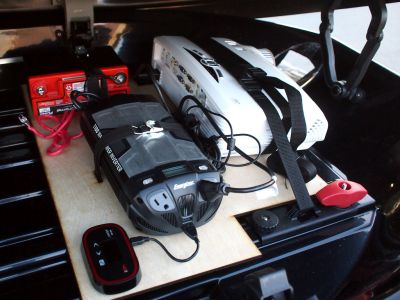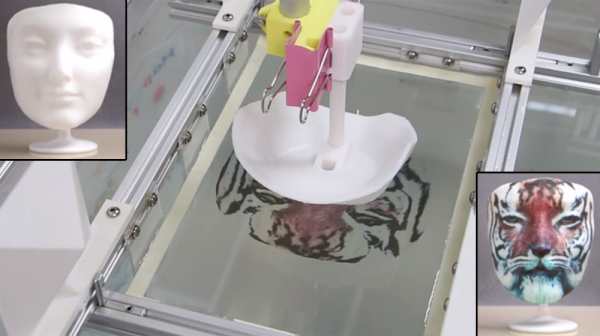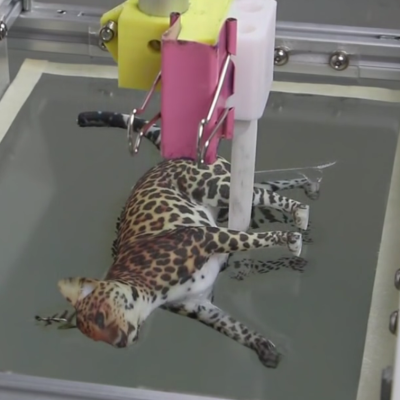We humans are becoming more aware every day that we need to reduce our fossil fuel dependence and move to more renewable methods lest we make the earth a less-desirable place to live. The sun is here today, and it will be tomorrow, harness that energy is one solution. There are places that are commonly windy, we can harness that energy too. [Jonathan] and [Ellen] set out to harness that wind energy but not in the traditional wind-turbine way. Wind creates ocean waves and the pair set out to recover some of that wave energy. They built a proof of concept and they did it on a budget with a side of DIY-style, to boot!
The device consists of a raft, with magnets attached to a sheet metal ruler standing on end. As you would expect, this ruler is flexible and the mass of the magnets easily sways back and forth as waves pass. The magnets move through stationary wire coils and as they do, creating an electrical current in the coils. The output of the coils is AC, which is then rectified to pulsed DC using several diodes and smoothed even further by some capacitors. The two DC outputs are then connected in series to double the voltage to 5 with a max current of about 20mA.
For this experiment the generator powers a modified smoke alarm which keeps burglars away from a coral reef. But the team could see this powering lights on buoys or low-power sensors. What would you use it for?




 But before that, it’s time to bid farewell to the cheeky little popup window that would deliver a warning message when using a board bearing the USB IDs of their former-partner-turned-competitor. We absolutely
But before that, it’s time to bid farewell to the cheeky little popup window that would deliver a warning message when using a board bearing the USB IDs of their former-partner-turned-competitor. We absolutely 
 The projector itself is the HD25-LV, a 3500 Lumen model from Optima. the HD25-LV is capable of 1080p, though in this situation, brightness is much more important than resolution. [Mikeasaurus] mounted the projector along with a gel cell battery and 900 watt DC to AC inverter to power it. A mobile WiFi hotspot fills out the rooftop kit. Leaving an expensive setup like that on top of a car is a recipe for disaster – be it from rain, rocks, or theft. [Mikeasaurus] thought ahead and strapped his setup down inside a roof mounted cargo box. A plastic covered hole in the front of the box allows the projector to shoot down on the road while protecting its lens. We’d want to add a vent and fan to ensure that projector gets a bit of airflow as well.
The projector itself is the HD25-LV, a 3500 Lumen model from Optima. the HD25-LV is capable of 1080p, though in this situation, brightness is much more important than resolution. [Mikeasaurus] mounted the projector along with a gel cell battery and 900 watt DC to AC inverter to power it. A mobile WiFi hotspot fills out the rooftop kit. Leaving an expensive setup like that on top of a car is a recipe for disaster – be it from rain, rocks, or theft. [Mikeasaurus] thought ahead and strapped his setup down inside a roof mounted cargo box. A plastic covered hole in the front of the box allows the projector to shoot down on the road while protecting its lens. We’d want to add a vent and fan to ensure that projector gets a bit of airflow as well.
 The physical setup for this hack is fairly simple: a vat of water, a linear motor attached to a gripper, and a Kinect. The object is attached to the gripper. The Kinect measures its location and orientation. This data is applied to a 3D-scan of the object along with the desired texture map to be printed onto it. A program creates a virtual simulation of the printing process, outputting a specific pattern onto the film that accounts for the warping inherent to the process. The pattern is then printed onto the film using an ordinary inkjet printer.
The physical setup for this hack is fairly simple: a vat of water, a linear motor attached to a gripper, and a Kinect. The object is attached to the gripper. The Kinect measures its location and orientation. This data is applied to a 3D-scan of the object along with the desired texture map to be printed onto it. A program creates a virtual simulation of the printing process, outputting a specific pattern onto the film that accounts for the warping inherent to the process. The pattern is then printed onto the film using an ordinary inkjet printer.















